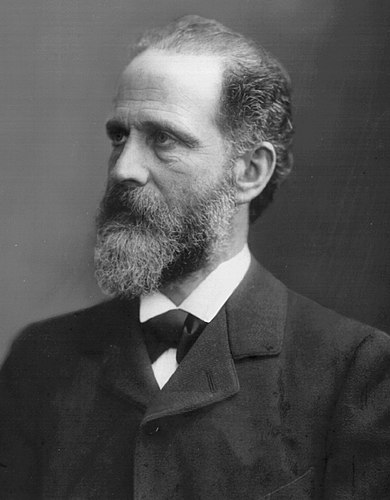Victor Meyer Test is one of the frequently used methods to differentiate between primary(1°), secondary(2°) and tertiary(3°) alcohols. Each kind of alcohol 1°, 2° and 3° has a different colour of the reaction solution, using which they are distinguished.
Index
History
The test which distinguishes between primary, secondary and tertiary alcohol was developed by Viktor Meyer.
Viktor Meyer was a German chemist who contributed significantly to both organic and inorganic chemistry. Some of his famous works are the Victor Meyer Apparatus for determining vapour densities, the discovery of thiophene, and the discovery of nitrolic acids to mention a few.

The Test Explained
The Victor Meyer test is used to differentiate between primary, secondary and tertiary alcohols, using the colour of the solutions they each produce after a series of reactions.
In the test, the alcohol being tested is first converted into an iodide with either red phosphorus and iodine or concentrated HI.
Then, the resulting iodide is converted into a nitroalkane (R-NO2) using AgNO2 as the reagent.
The resulting nitroalkane is then treated with nitrous acid (prepared in the situ itself).
Then, the resulting product is made alkaline, using KOH as the reagent, which changes the colour of the solution.
Victor Meyer Test for 1° Alcohols
\(R-CH_2-OH + (P+I_2) \text{ or } \underset{Concentrated}{HI} \rightarrow \underset{Iodoalkane}{R-CH_2-I} + AgNO_2 \rightarrow \underset{Nitroalkane}{R-CH_2-NO_2}\)\(R-CH_2-NO_2 + \underset{Nitrous Acid}{HNO_2} \rightarrow \underset{Nitrolic Acid}{R-C(N-OH)-NO_2} + KOH \rightarrow \textbf{ Red Colour}\)
Victor Meyer Test for 2° Alcohols
\(R_2-CH-OH + (P+I_2) \text{ or } \underset{Concentrated}{HI} \rightarrow \underset{Iodoalkane}{R_2-CH-I} + AgNO_2 \rightarrow \underset{Nitroalkane}{R_2-CH-NO_2}\)
\(R_2-CH-NO_2 + \underset{Nitrous Acid}{HNO_2} \rightarrow \underset{Pseudo Nitrol}{R_2-C(N=0)-NO_2} + KOH \rightarrow \textbf{ Blue Colour}\)
Victor Meyer Test for 3° Alcohols
\(R_3-C-OH + (P+I_2) \text{ or } \underset{Concentrated}{HI} \rightarrow \underset{Iodoalkane}{R_3-C-I} + AgNO_2 \rightarrow \underset{Nitroalkane}{R_3-C-NO_2}\)
\(R_3-C-NO_2 + \underset{Nitrous Acid}{HNO_2} \rightarrow \text{ No Reaction } + KOH \rightarrow \textbf{ Colourless}\)
Read about a similar test namely Lucas Test
Applications
- The famous test is majorly used to differentiate between primary, secondary and tertiary alcohols.
- This test can also be used in finding the empirical and molecular formulas of a compound.
Example Problems
Question 1. Which of the following compounds give a blue colour solution for the given chemical reaction?
\(X + HNO_2 + NaOH \rightarrow \text{Blue colour solution}\)
- \(CH_3-CH_2-CH_2-OH\)
- \((CH_3)_2-CH-OH\)
- \((CH_3)_2-CH-CH_2-OH\)
- \(C_6H_6-OH\)
Answer. The correct option is 2.
The given reaction is the last step of the Victor Meyer test, so \(X\) is a secondary alcohol. The only secondary alcohol in the given options is 2.
Question 2. Which of the following compounds is not formed in the Victor Meyer test for primary alcohols?
- Iodoalkane
- Nitroalkane
- Pseudo Nitrol
- Nitrolic Acid
Answer. The correct option is 3.
Pseudo Nitrol is not formed in this test for a primary alcohol, it is formed in the test for secondary alcohol.
FAQs
The Victor Meyer test is one of the most widely used tests for distinguishing primary, secondary and tertiary alcohol. The other test which is equally as popular is Luca’s test.
Nitrous acid in the reaction of this test is added in the form of NaNO2 + HCl mixture.
The reason for adding nitrous acid in this way is because it is unstable.
The final solution of tertiary alcohol in this test is colourless because it does not react with the nitrous acid in the previous step as it does not have a hydrogen atom to replace in the reaction.
In the test, the first step is to make iodoalkanes using concentrated HI or P + I2 mixture, but in the case of phenols, the transition state of this reaction disrupts their aromaticity thereby making them unstable due to which it is not feasible.
The other reason is that, there is a partial double between carbon and oxygen in the phenol molecule which makes it stronger than the normal ones.
